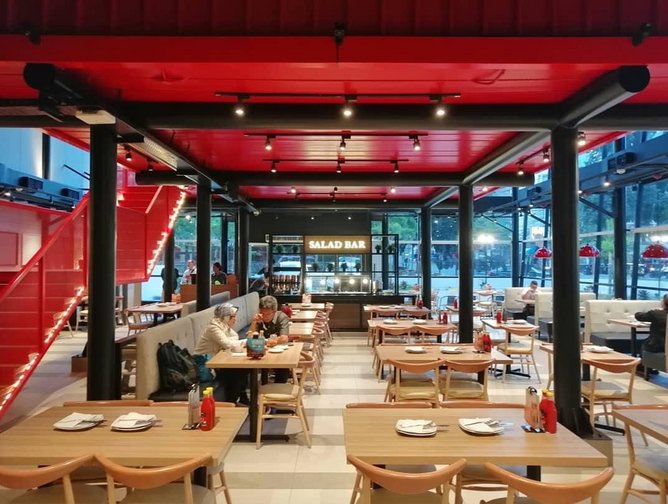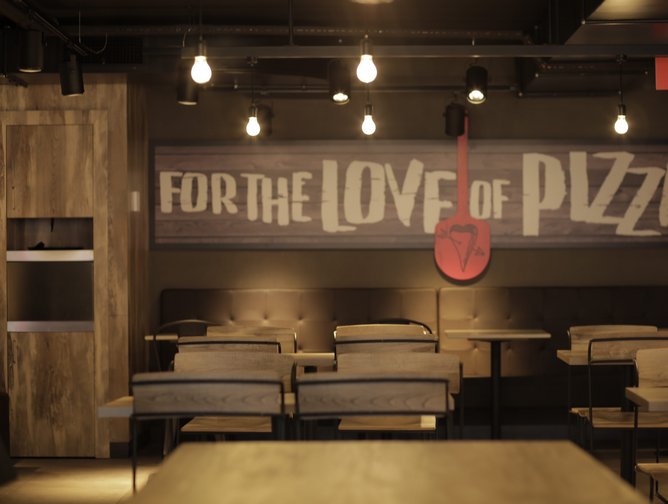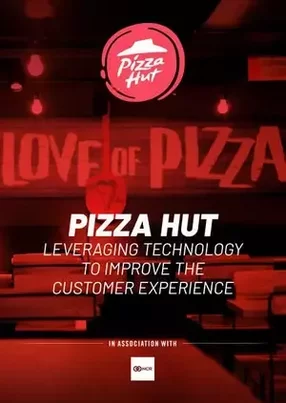Pizza Hut is leveraging technology to enhance its customers’ experience in APAC
Pizza Hut wants to create a world with more ‘yum’. As part of the Yum! Brands corporation, a Fortune 500 company based in Kentucky, the company prioritises its customers’ experience. Troy Barnes, Chief Customer Officer for the Asia Pacific (APAC) region at Pizza Hut, believes that with a focus on the consumer journey, the business will see positive results. Barnes’ role is made up of three key pillars: restaurant excellence, digital experience and restaurant technology. “Restaurant excellence focuses on what happens in store – products, delivering pizzas and food safety standards and service culture. Digital experience is about understanding how customers want to interact with the brand and delivering on that, largely through online purchasing, whether that be the website, app, social media or messaging” he explains. “Restaurant technology looks at the underlying technologies that support the employees of our franchises. Things like point-of-sale platforms, inventory supply chain, labour management, and supply and demand modelling.” Underlining all three pillars is customer engagement, in which Pizza Hut looks to understand and assess how each aspect works collectively under the customer experience umbrella with the strategic focus of having more customers more often to Pizza Hut.
Since his position was established as the first customer role in the APAC region last year, Barnes and his team have worked to bring the consumer to the forefront of the business. “Collectively, we have brought that customer mindset to the core of our strategy – including our engagements, partnerships, workshops and franchise growth. We have reworked the business with a more focused lens around the customer itself, well supported by our other regional and global counterparts. Our job is really then to augment that focus with building capabilities,” comments Barnes.
For Pizza Hut, digital transformation is about an end-to-end experience that will offer an overall, seamless benefit to the customers – the company is building the know to better understand and create more value to the consumers’ journey. “Leveraging digital is really about what journey a customer is currently going through, what journey you want to create, and more importantly, what journey a customer is looking for,” he says. When evaluating the entire process, the firm will then divide it into key priorities, such as the fast-casual digital store. “It’s really a concept that creates a common experience on the back end of understood and defined journeys. It enables our customers to order pizza for themselves and their families in a very frictionless, seamless and easy way,” Barnes explains. On a strategic level, Pizza Hut is aiming to establish a consistent perception of its franchises across all markets, with finetuning to specific local needs, usually within the menu. The company is focused on making the brand relevant to all customer segments locally – ensuring ease, quality and excitement no matter the location.
Pizza Hut has always prioritised listening to its customer feedback and ensuring that any changes it makes to its operations will be beneficial for the consumer. “Technology is really breaking new ground by making life easier – with apps or websites, social media and messaging platforms, a lot of brands and organisations are trying to compete in the space of making it easy for customers to engage with them, allowing the business to satisfy the consumers’ needs,” Barnes notes. “The experiences and journeys that have been created as part of these fast-casual digital stores have definitely provided a lot of uplifting customer feedback which we track globally on an order-by-order basis. The response of overall satisfaction and ease with which our consumers can order pizza through this new platform has increased dramatically. This positive feedback has translated into sales and revenue at the end of the day.”
Barnes highlights the importance of customer retention within the company’s operations: “We want to understand the behaviour of the consumer in regards to preference when ordering a pizza, regardless of the brand. An understanding of that behaviour would give us insight into a mindset.” The company has been working on a data-driven project that revolves around the behaviour of customers. Once the data was collected, the company then established a “very purposeful and personalised” capability. “We’re moving away from segmentation and broad-based or broadcast marketing that leans towards certain offers and discounts. Instead we’re opting towards engaging with consumers on more of an emotional and personal level to create a more meaningful relationship,” Barnes adds.
As the company continues on its digital transformation journey, Barnes see Pizza Hut’s growth through two key aspects: “I think Pizza Hut will continue to evolve its presence in how it delivers an experience for consumers that becomes world class. I also think the firm will continue to leverage the core of its business, and the brand that underpins that, augmented by its internal culture to really drive a new way of creating those experiences.” Despite the clear goals set by the company, its digital transformation journey is not set in stone. “I think the exciting part is that I don't have the answer to what that will actually look like, and that’s the thrilling part of a five-year plan.”



- Top 100 Women 2024: Tanja Rueckert, Bosch - No. 6Digital Transformation
- Coforge: Arming Financial Firms with the Tools to InnovateDigital Transformation
- Coforge: Arming Financial Firms with the Tools to InnovateDigital Transformation
- MWC24: Harnessing AI to Modernise Telcos with Tech MahindraDigital Transformation

